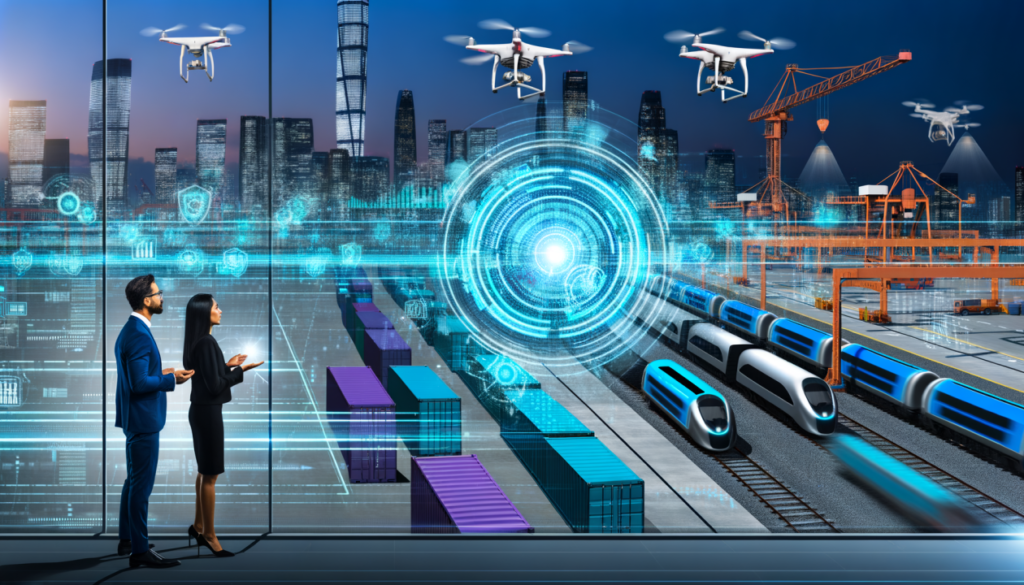Harnessing Technology: Boosting Logistics & Supply Chain Efficiency

In today’s rapidly evolving world, technological advancements have fundamentally reshaped the landscape of logistics and supply chain systems. In a sector traditionally characterized by labor-intensive processes and manual oversight, the rise of innovative technologies promises newfound efficiencies, cost reductions, and streamlined operations.
The Technological Revolution in Logistics
The logistics sector is witnessing a digital transformation driven by technological advancements. The integration of technologies such as the Internet of Things (IoT), robotics, artificial intelligence (AI), and blockchain is redefining operational paradigms.
Internet of Things (IoT)
IoT devices are revolutionizing the visibility and transparency of supply chains. By equipping physical objects with sensors and connectivity, IoT enables real-time data collection and insights. This real-time data facilitates everything from inventory management to predictive maintenance.
For instance, smart sensors can track the location of shipments, monitor conditions like temperature and humidity, and send alerts about potential disruptions. By enabling companies to react proactively rather than reactively, IoT helps in minimizing delays and ensuring the integrity of goods throughout their journey.
Robotics and Automation
Warehouses and distribution centers increasingly rely on robotics and automation to improve efficiency and accuracy. Automated guided vehicles (AGVs), robotic arms, and drones are now common in modern logistics facilities.
These technologies reduce the manual effort required in picking, sorting, and packing tasks, leading to faster order fulfillment and a significant drop in errors and operational costs. Essentially, robotics and automation empower logistics providers to process more orders with fewer resources, optimizing both speed and reliability.
Artificial Intelligence (AI)
AI plays a pivotal role in enhancing decision-making capabilities across the supply chain. AI algorithms analyze vast datasets to predict demand patterns, optimize routes, and even schedule maintenance activities.
Machine learning models can forecast trends, which allows companies to pre-emptively manage stock levels or negotiate better terms with suppliers. By increasing forecasting accuracy, AI reduces waste and prevents overproduction, aligning supply with demand.
Blockchain
Transparency and security in supply chains can be bolstered through blockchain technology. Its decentralized ledger system ensures every transaction is validated and recorded, reducing opportunities for fraud.
Moreover, blockchain provides a reliable way to trace the provenance and authenticity of products, vital for industries like pharmaceuticals and food, where consumer safety is paramount.
Supply Chain Optimization Through Technology
Technological advancements do more than just enhance individual components; they facilitate a holistic approach to supply chain optimization.
Improved Collaboration
Digital platforms enable seamless communication and data-sharing across the supply chain, from suppliers to end-users. Information sharing fosters collaboration, ensuring each stakeholder has access to the latest information.
Cloud-based solutions offer centralized platforms that aggregate data, providing a unified view of the supply chain’s state. Enhanced collaboration translates to improved planning, less waste, and a more responsive supply chain.
Sustainability Initiatives
Technology also supports sustainability efforts within logistics. By utilizing advanced analytics, companies identify inefficiencies and devise eco-friendly strategies.
Fleet management systems suggest fuel-efficient routes, while smart energy management during warehousing operations reduces power consumption. As consumers become more environmentally conscious, these sustainability initiatives often yield competitive advantages.
Challenges and Opportunities
Despite the myriad of benefits, integrating technology into logistics presents challenges. High initial investment costs, skill development for tech adoption, and cybersecurity worries are among the notable obstacles.
However, these challenges also offer opportunities. As the sector evolves, companies that champion digital innovation are better positioned for growth. They can capitalize on efficiency gains, enhance profitability, and deliver superior customer experiences, setting themselves apart in a competitive market.
Conclusion
Tech-driven enhancements are propelling logistics and supply chains into a new era. Companies embracing these advancements are not only improving operational efficiencies but also redefining the standards of service and sustainability within the industry.






Responses